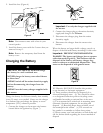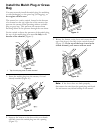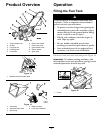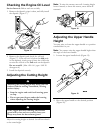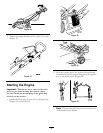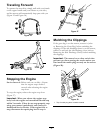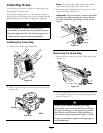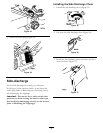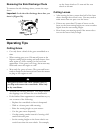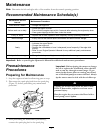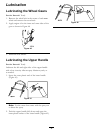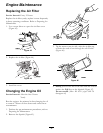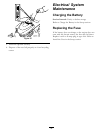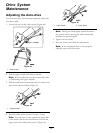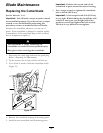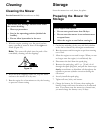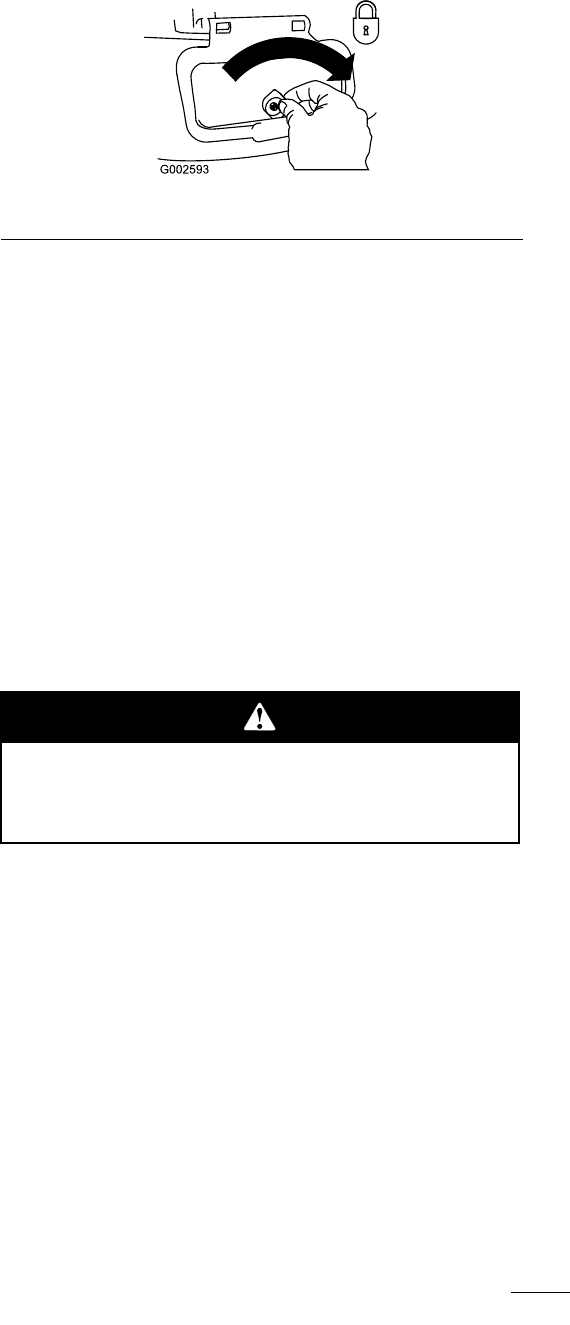
Removing the Side Discharge Chute
To remove the side discharge chute, reverse the steps
above.
Important: Lock the side discharge door after you
close it (Figure 38).
Figure 38
Operating Tips
Cutting Grass
• Cut only about a third of the grass cutterblade at a
time.
• When cutting grass over 150 mm tall, mow at the
highest cutting height setting and walk slower; then
mow again at a lower setting for the best lawn
appearance. If the grass is too long, the mower may
block and cause the engine to stall.
• Mow only dry grass or leaves. Wet grass and leaves
tend to clump on the lawn and can cause the mower
to plug or the engine to stall.
Wet grass or leaves can cause serious injury if
you slip and contact the cutterblade. Mow only
in dry conditions.
• Alternate the mowing direction. This helps disperse
the clippings over the lawn for even fertilization.
• If the nished lawn appearance is unsatisfactory, try
one or more of the following:
– Replace the cutterblade or have it sharpened.
– Walk at a slower pace while mowing.
– Raise the cutting height on your mower.
– Cut the grass more frequently.
– Overlap cutting swaths instead of cutting a full
swath with each pass.
– Set the cutting height on the front wheels one
notch lower than the rear wheels. For example,
set the front wheels at 51 mm and the rear
wheels at 64 mm.
Cutting Leaves
• After cutting the lawn, ensure that half of the lawn
shows through the cut leaf cover. You may need to
make more than one pass over the leaves.
• If there are more than 130 mm of leaves on the
lawn, set the front cutting height one or two notches
higher than the rear cutting height.
• Slow down your mowing speed if the mower does
not cut the leaves nely enough.
16



